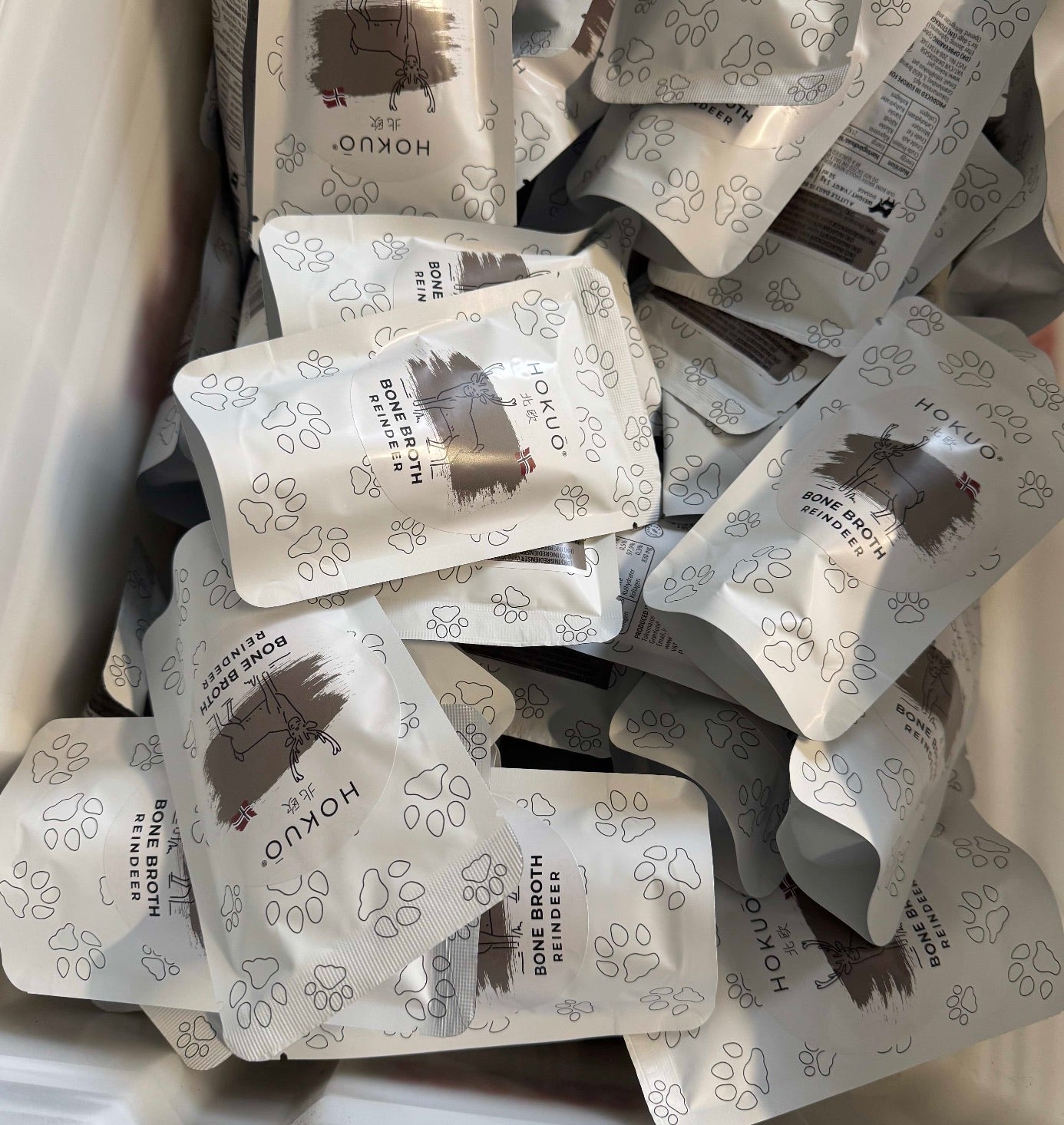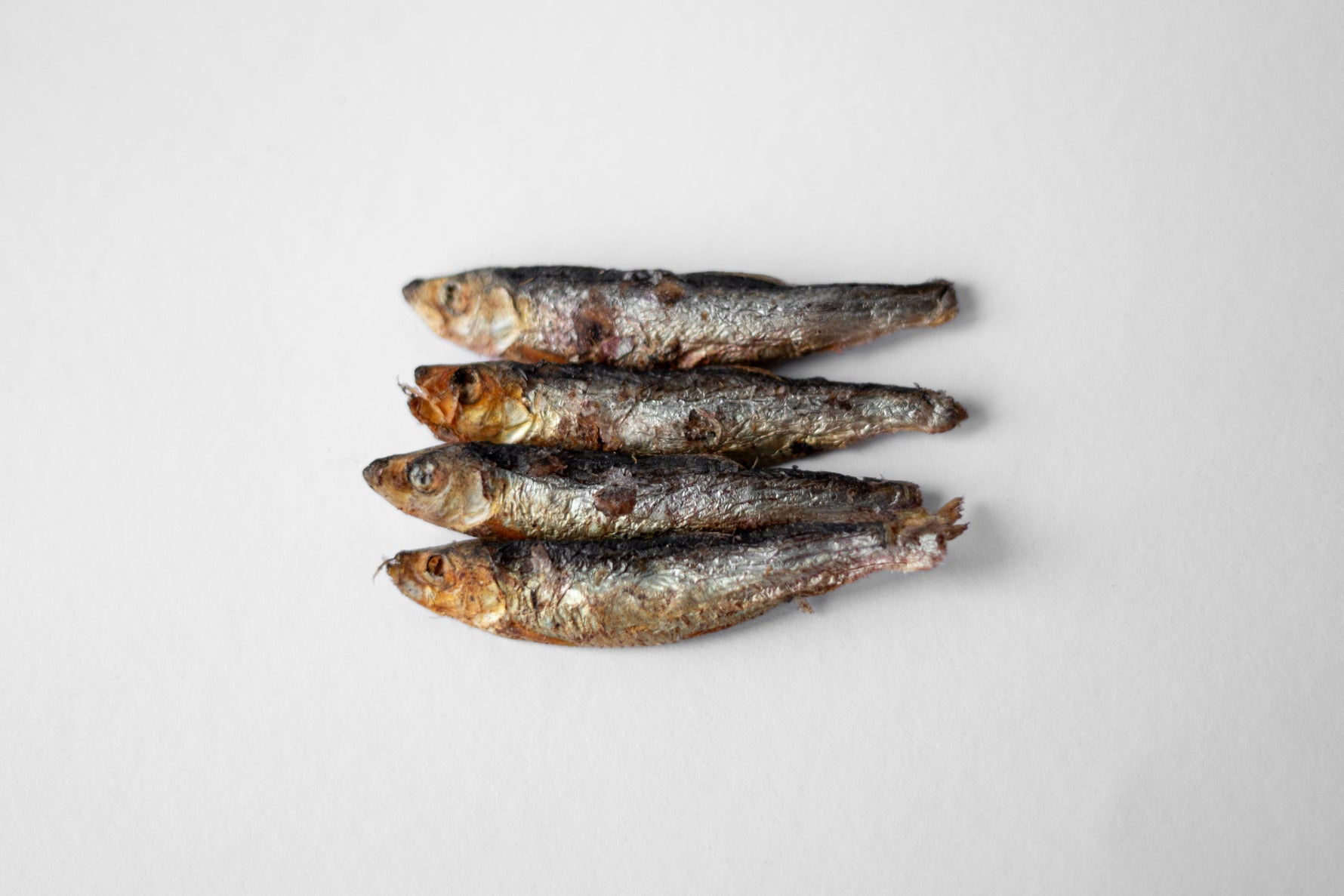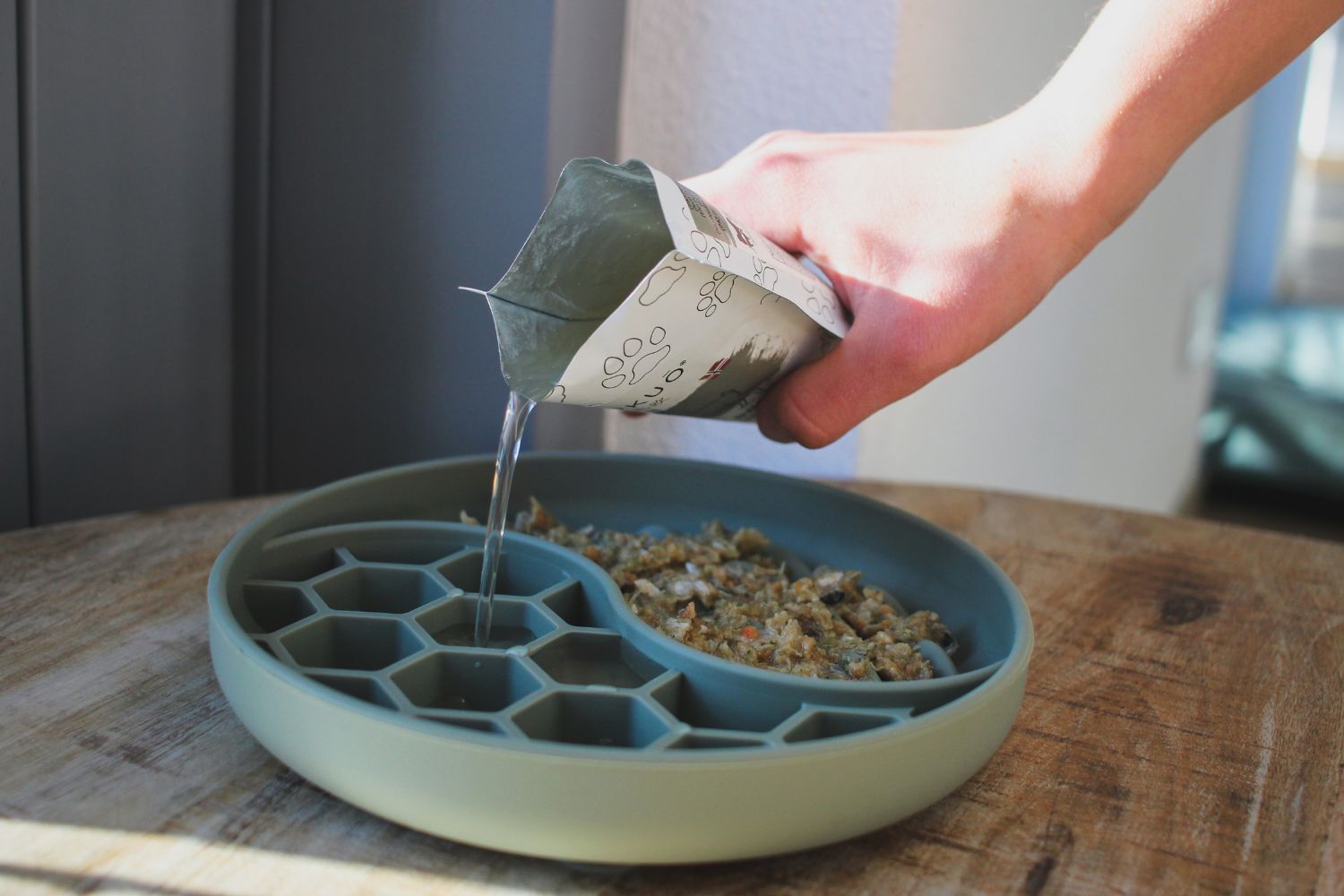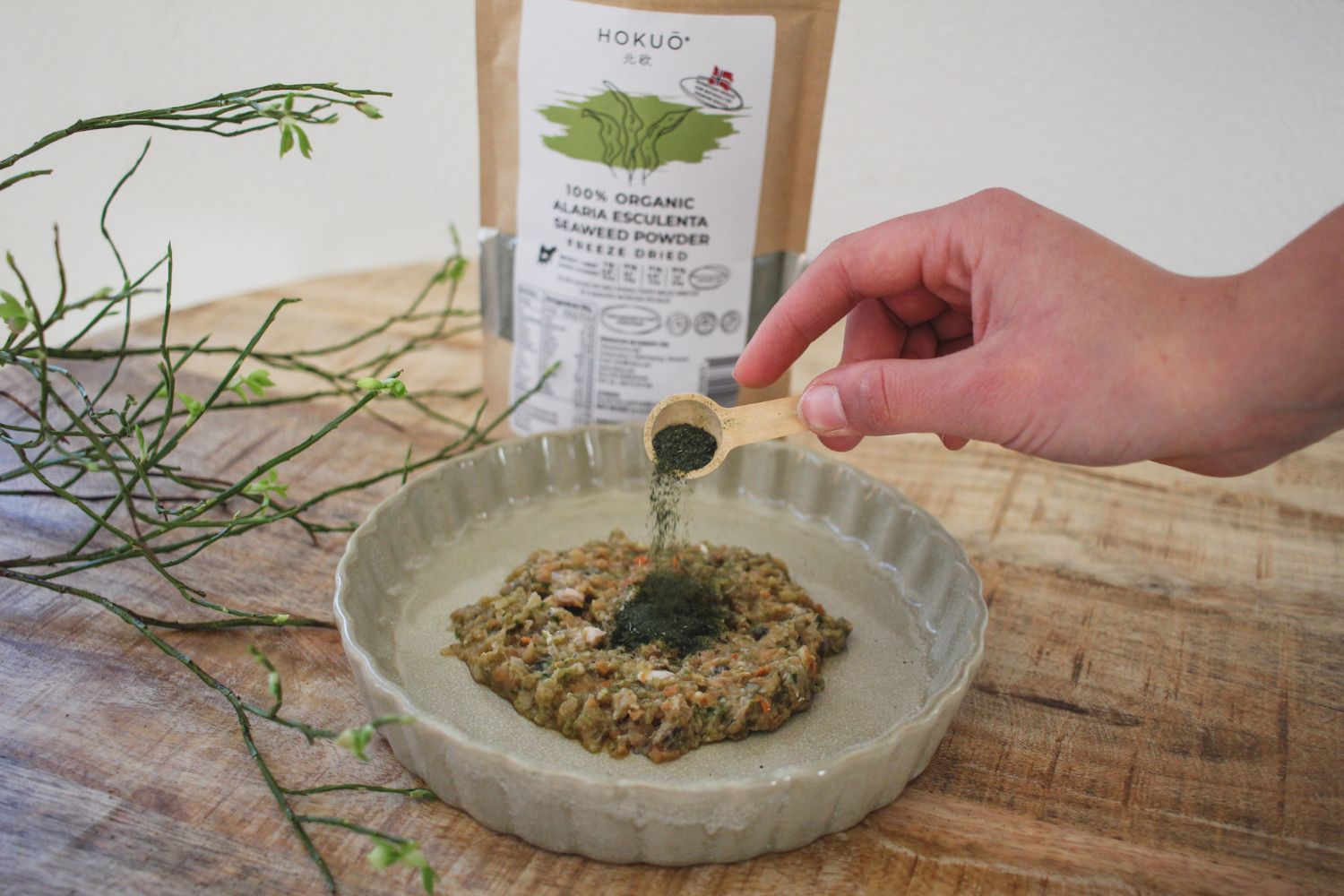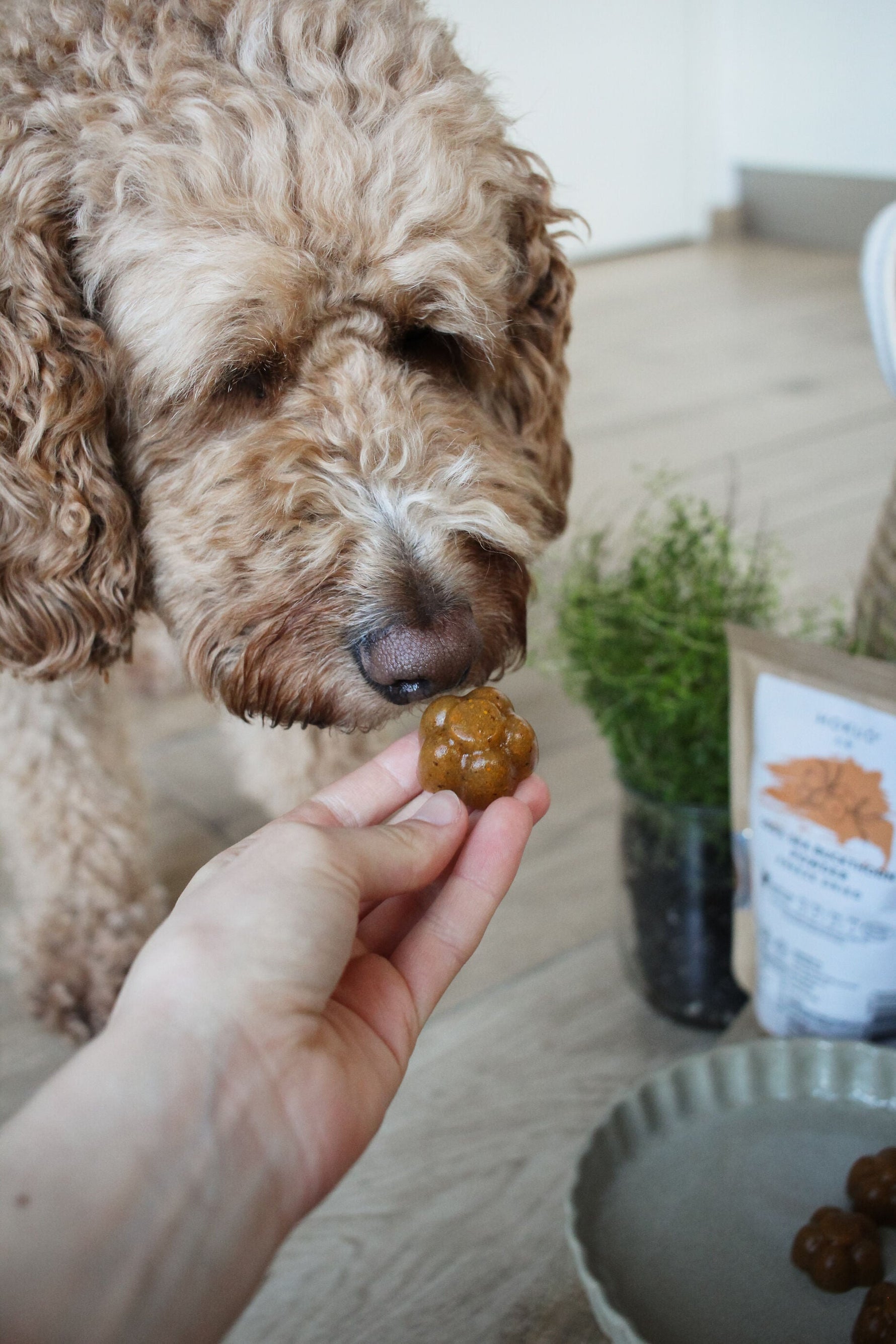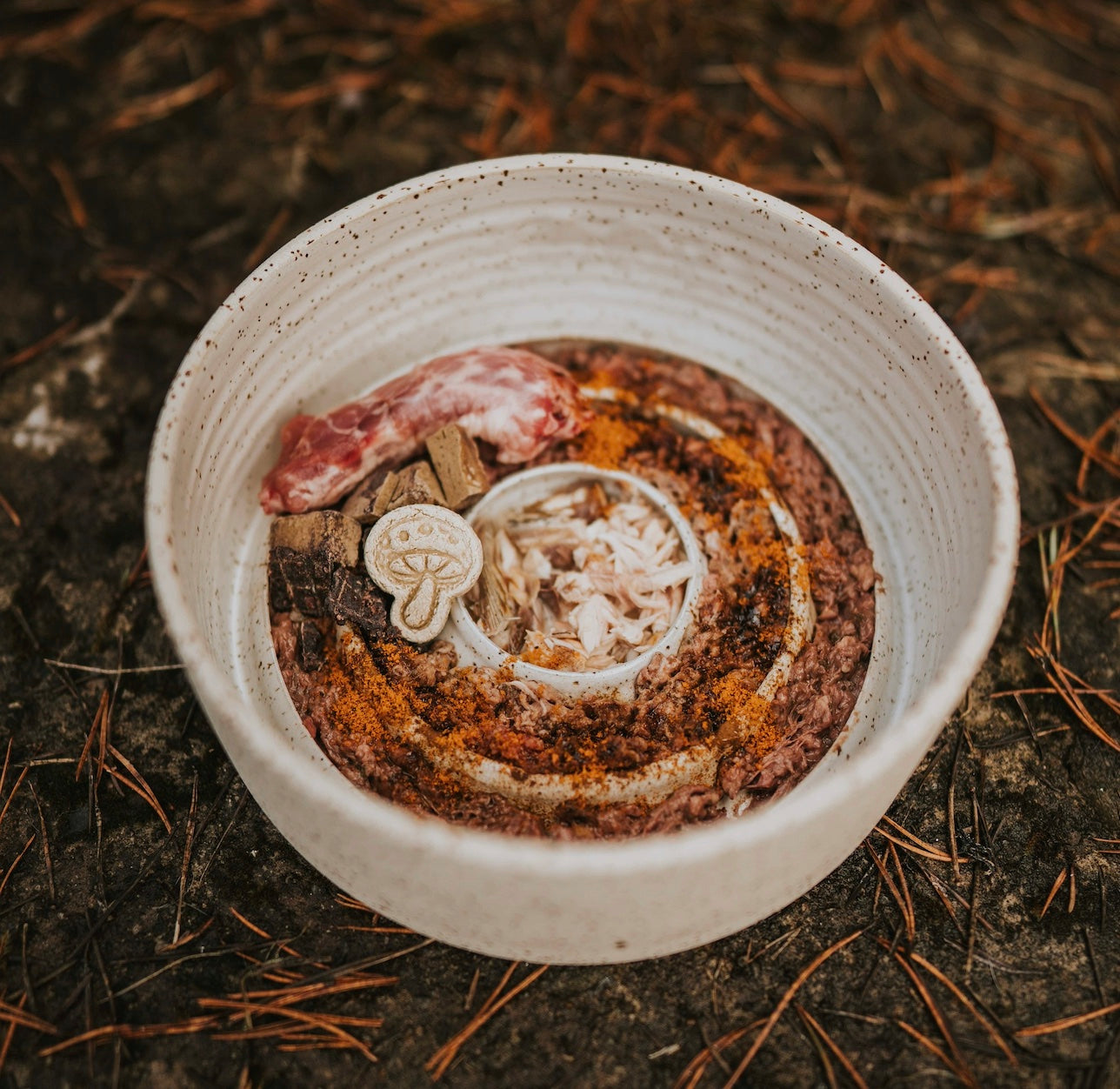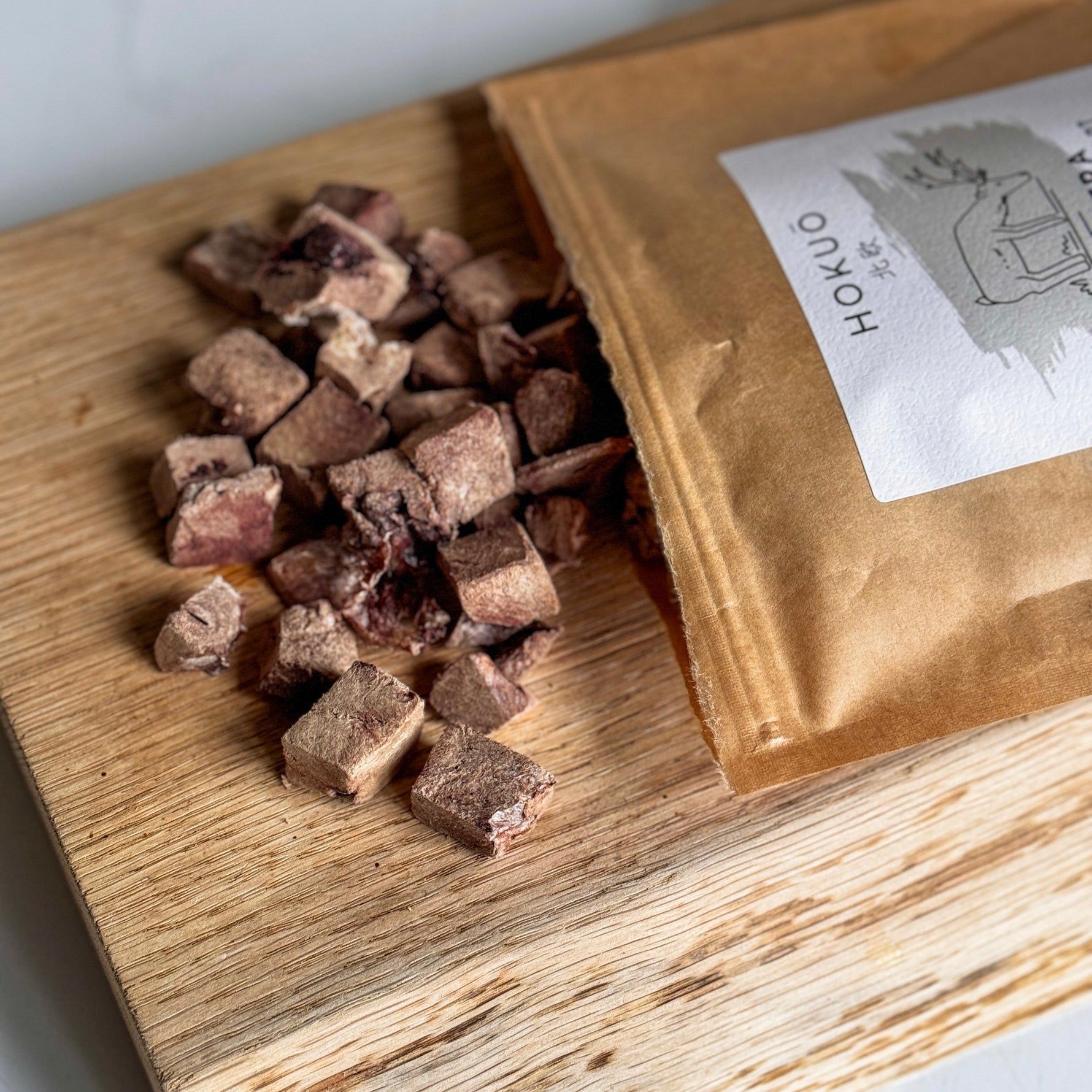Keeping your furry friend healthy and happy is every pet parent’s priority, and a balanced diet plays a key role. But did you know that even the best dog food can sometimes leave nutritional gaps? That’s where multivitamin gummies for dogs come in! These tasty, nutrient-packed treats make it easy (and fun!) to supplement your dog’s diet with essential vitamins and minerals.
In this blog, we’ll explore why multivitamins for dogs are important and provide you with a simple, DIY recipe that your dog will love!
Overview
Why multivitamins for dogs? Key vitamins in Dandelion & Sea Buckthorn A stronger immune system = a healthier dog Healthy skin, a shiny coat and happy joints Better digestion & natural detox Small changes, big benefits DIY Multivitamin gummies recipe for dogs Homemade dog vitamins for picky eaters?
Why multivitamins for dogs?
We all want our dogs to live long, happy, and healthy lives. A balanced diet is the foundation of good health, but even high-quality dog food can lack essential vitamins and minerals. That’s where multivitamins for dogs come in!
Every dog has different needs. Some are energetic adventurers, while others prefer cozy naps. No matter their lifestyle, the right nutrients help support immune function, digestion, skin and coat health, and joint mobility.
Natural dog supplements, like dandelion extract for dogs and sea buckthorn for pets, provide targeted support to help fill nutritional gaps and keep your dog thriving. Let’s dive a little deeper into the specific benefits of these powerful ingredients below!
Photo by Marleen Meindersma for Hokuō®
Key vitamins in Dandelion & Sea Buckthorn
Nature provides powerful nutrients that support your dog’s health. These two superfoods are packed with essential vitamins, minerals, and antioxidants:
Dandelion:Supports liver and kidney function, digestion and overall wellness. It’s rich in:
Vitamins A, C, and K: crucial for immune health, vision, and cell repair.
B-complex vitamins (B1, B2, B3, B6, Folate): essential for energy production, brain function, and skin health.
Magnesium, calcium, potassium, and iron: key minerals for strong bones, muscle function, and healthy blood circulation.
Sea buckthorn:
Packed with omega fatty acids (3, 6, 7, 9) to promote healthy skin, a shiny coat and overall health. It also contains:
Vitamins A, C, E, and K: vital for skin, immune support, and reducing inflammation.
B-complex vitamins (B1, B2, B3, B6, Folate): important for energy, metabolism, and healthy growth.
Phosphorus, zinc, manganese, and selenium: minerals that boost immunity, promote cell growth, and help reduce inflammation.
Antioxidants (Flavonoids, Carotenoids, Phytosterols): support overall wellness and immune function.
By incorporating these natural ingredients into your dog's foodbowl, homemade dog vitamins or healthy dog treats, you’re giving your dog the extra support they need. And all without artificial additives or fillers!
See Product
See Product
A stronger immune system = a healthier dog
A strong immune system is crucial for your pet’s health. It helps to keep your dog happy and active. With the right balance of nutrients, your pet can stay active, alert, and full of life! Just like humans, dogs need antioxidants to fight off illness and reduce inflammation. Vitamins C, E, and beta-carotene (for example found in sea buckthorn for pets) help protect against free radicals and keep your dog’s immune system strong.
Moreover, if your dog tends to get sick easily or struggles with allergies, adding natural dog supplements rich in antioxidants can be a game changer. It’s a simple yet effective way to help them stay resilient and healthy.
Healthy skin, a shiny coat and happy joints
We all love to see our dogs with shiny fur and bright, happy eyes. A healthy coat isn’t just about looking good. It’s also a reflection of what’s happening inside. Omega fatty acids, zinc, and vitamin A (all found in sea buckthorn for pets) help keep your dog’s skin hydrated, reduce itching, and support a glossy, healthy coat.
And let’s not forget their joints! Whether your dog loves running around or prefers a cozy nap, joint health is essential. Ingredients like dandelion extract for dogs provide calcium and magnesium, which help maintain strong bones and mobility. Omega-3s also play a key role in reducing inflammation, making them perfect for senior dogs or breeds prone to joint issues.
Photo by Marleen Meindersma for Hokuō®
Better digestion & natural detox
A healthy gut means better digestion, more energy, and overall wellness. If your dog experiences bloating, gas, or irregular digestion, they might benefit from natural digestive support. Dandelion extract for dogs is known for promoting liver detoxification and supporting kidney health, while fiber-rich ingredients like sea buckthorn can aid digestion.
When dogs get the right nutrients, their bodies can process food more efficiently, leading to better nutrient absorption and improved energy levels. This means a happier, more active dog with fewer tummy troubles!
Small changes, big benefits
The best part about adding multivitamins to your dog’s routine? It’s incredibly easy! Whether you choose homemade dog vitamins, healthy dog treats, or simple natural dog supplements, even small additions can make a big difference in their well-being.
Giving your dog the right nutrition is one of the best ways to show love and care. With a little extra support from multivitamins for dogs, you’re helping them live their best, healthiest life!
DIY Multivitamin gummies recipe for dogs
And what better way to make supplements enjoyable than by turning them into tasty, homemade gummies? Not only are they packed with essential nutrients, but they’re also a fun and delicious way to treat your dog. Plus, they’re easy and fun to make at home with just a few simple ingredients!
Preparation time: 10 minutes
Cooking time: 5 minutes
Setting time: 2-3 hours
Servings: approximately 20 gummies (depending on the size of your mold)
Ingredients:
1 tsp Hokuō® Dandelion Extract Powder
2 tbsp freeze-dried Hokuō® Sea Buckthorn Powder (blended with liquid for best results)
3 tbsp beef gelatin (or agar-agar for a vegetarian option)
1 cup water or low-sodium bone broth (for added flavor)
Optional: 1 tsp honey (omit for dogs with dietary restrictions)
See Product
See Product
See Product
See Product
See Product
See Product
See Product
See Product
See Product
See Product
See Product
See Product
Instructions:
Heat the water or bone broth over low heat in a small saucepan until warm.
Gradually sprinkle in the beef gelatin (or agar-agar), whisking continuously to avoid lumps.
Whisk until fully dissolved.
Remove from heat and stir in the Hokuō® Dandelion Extract Powder and freeze-dried Hokuō® Sea Buckthorn Powder.
Optional: add honey for a hint of sweetness (if your dog’s diet allows).
Pour the mixture into your silicone mold.
Refrigerate for 2-3 hours (until the gummies are fully set).
Pop the gummies out of the molds and store them in an airtight container in the refrigerator for up to two weeks.
Once your homemade dog vitamins are ready, your dog will have a delicious, nutrient-packed treat to enjoy! These healthy dog treats are more than just a fun snack. They make supplementing easy, especially for dogs who might turn their noses up at powders or pills.
Homemade dog vitamins for picky eaters?
If you’ve ever struggled to sneak powdered supplements into your dog’s meals, you know the struggle is real. That’s why these gummies are a game-changer!
Pleasant texture: most dogs love the chewy texture of gummies, making them less likely to turn their noses up.
Convenient dosing: no more messy powders! With gummies, you know your dog is getting the right amount of nutrients in each bite.
Customizable flavor: use low-sodium bone broth for a savory twist or water for a milder option, so your dog always enjoys their vitamins.
With just a few simple ingredients, you’ve created a healthy dog treat full of multivitamins for dogs that supports their well-being. No stress, no mess, just tail wags and happy licks. So why not give it a try? Your dog will love it, and you’ll love knowing they’re getting the best care possible!
The Author: Marleen Meindersma
Freelance blog writer for Hokuō®
